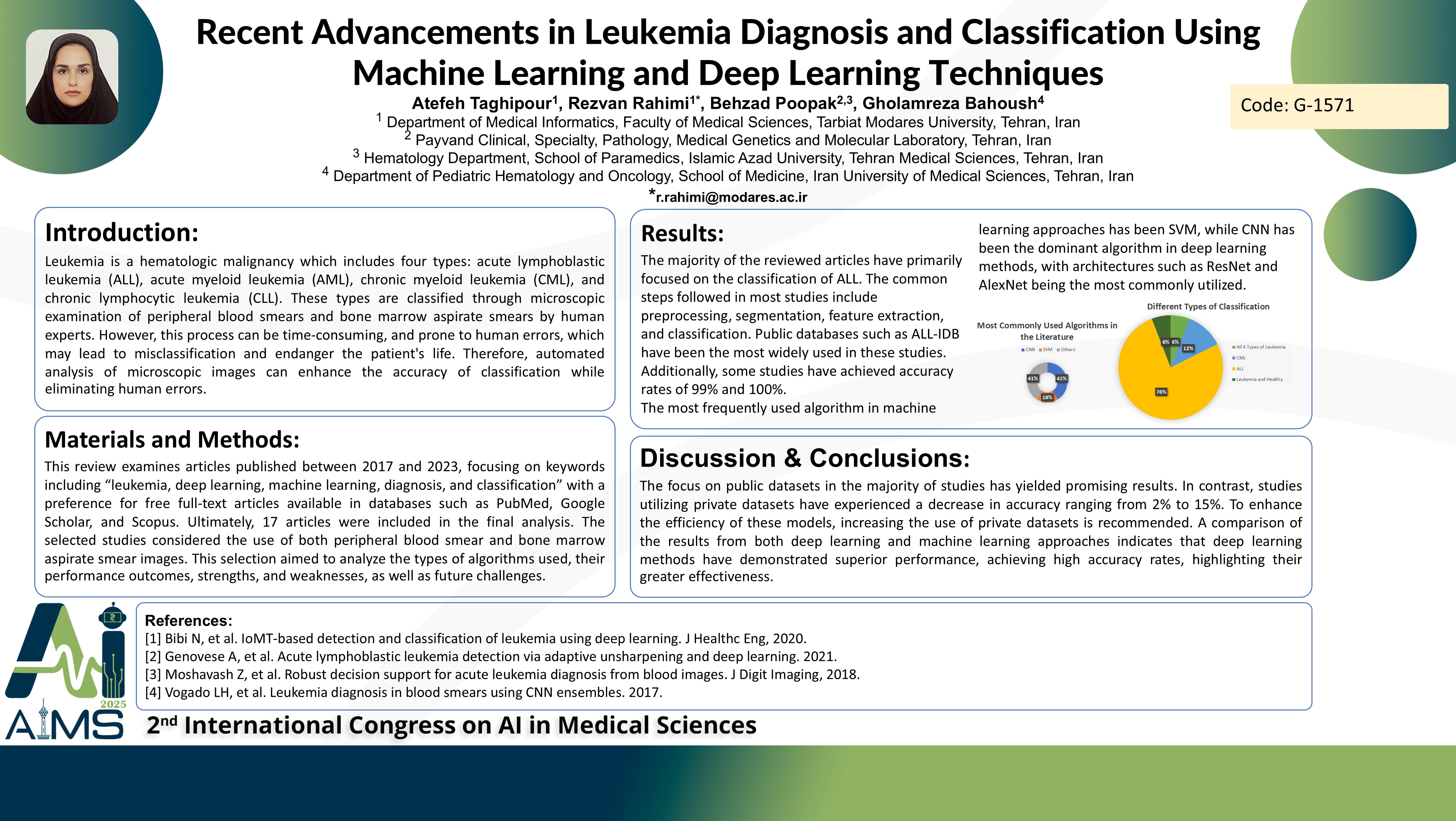پیشرفتهای اخیر در تشخیص و طبقهبندی لوسمی با استفاده از روشهای یادگیری ماشین و یادگیری عمیق
کد: G-1571
نویسندگان: Atefeh Taghipour ℗, Rezvan Rahimi *, Behzad Poopak, Gholamreza Bahoush
زمان بندی: زمان بندی نشده!
برچسب: پردازش سیگنال های پزشکی
دانلود: دانلود پوستر
خلاصه مقاله:
خلاصه مقاله
Background and aims: Leukemia is a hematologic malignancy which includes four types: acute lymphoblastic leukemia (ALL), acute myeloid leukemia (AML), chronic myeloid leukemia (CML), and chronic lymphocytic leukemia (CLL). These types are classified through microscopic examination of peripheral blood smears and bone marrow aspirate smears by human experts. However, this process can be time-consuming, and prone to human errors, which may lead to misclassification and endanger the patient's life. Therefore, automated analysis of microscopic images can enhance the accuracy of classification while eliminating human errors. Method: This review examines articles published between 2017 and 2023, focusing on keywords including “leukemia, deep learning, machine learning, diagnosis, and classification” with a preference for free full-text articles available in databases such as PubMed, Google Scholar, and Scopus. Ultimately, 17 articles were included in the final analysis. The selected studies considered the use of both peripheral blood smear and bone marrow aspirate smear images. This selection aimed to analyze the types of algorithms used, their performance outcomes, strengths, and weaknesses, as well as future challenges. Results: The majority of the reviewed articles have primarily focused on the classification of ALL. The common steps followed in most studies include preprocessing, segmentation, feature extraction, and classification. Public databases such as ALL-IDB have been the most widely used in these studies. Additionally, some studies have achieved accuracy rates of 99% and 100%. The most frequently used algorithm in machine learning approaches has been SVM, while CNN has been the dominant algorithm in deep learning methods, with architectures such as ResNet and AlexNet being the most commonly utilized. Conclusion: The focus on public datasets in the majority of studies has yielded promising results. In contrast, studies utilizing private datasets have experienced a decrease in accuracy ranging from 2% to 15%. To enhance the efficiency of these models, increasing the use of private datasets is recommended. A comparison of the results from both deep learning and machine learning approaches indicates that deep learning methods have demonstrated superior performance, achieving high accuracy rates, highlighting their greater effectiveness.
کلمات کلیدی
Leukemia, Classification, Deep Learning, Machine Learning
